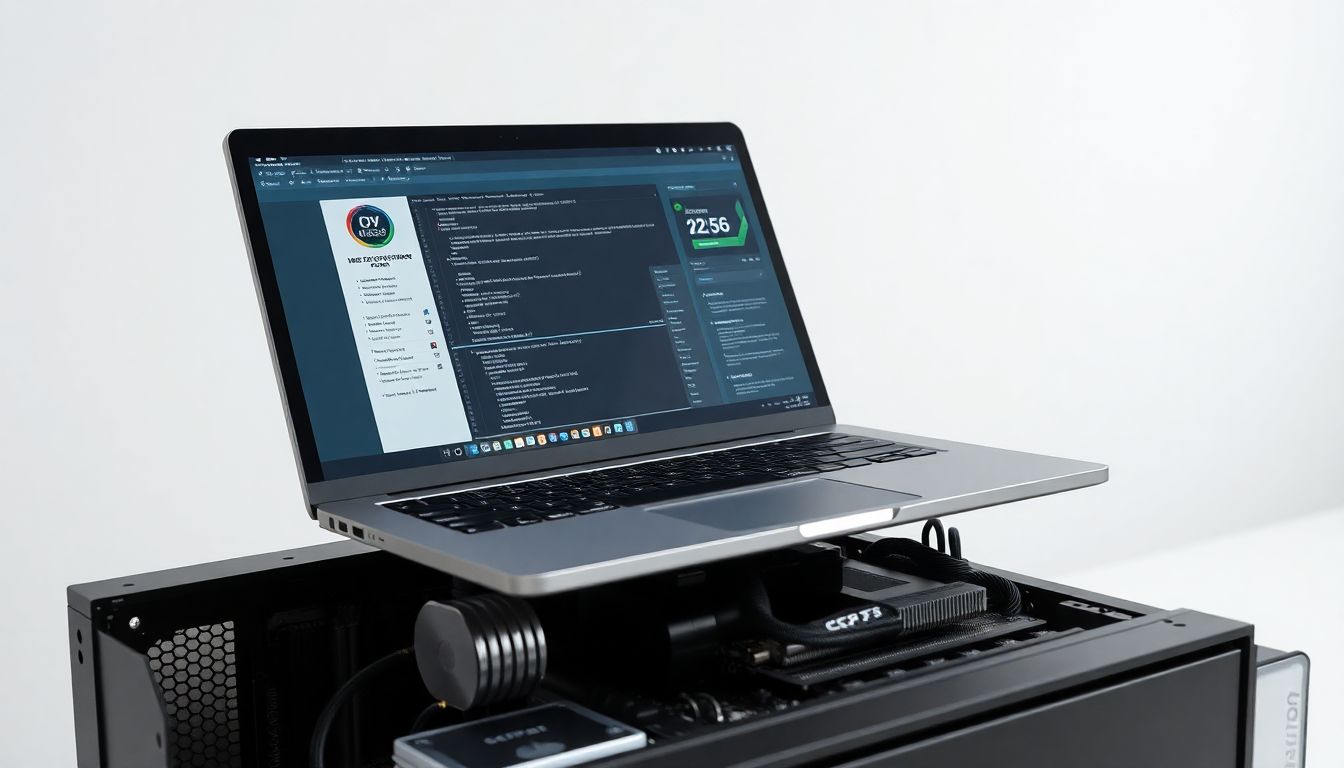
Can I Use a Laptop as a Primary Monitor for My CPU?
The increasing demand for efficient working spaces has led many users to explore the potential of dual-screen setups. This article covers the feasibility, methods, and considerations for using a laptop as a primary monitor for your CPU.
The Allure of Dual-Screen Productivity
The Growing Need for Multi-Monitor Setups
Research shows that using dual monitors can boost productivity by up to 42%. Workers often find that having multiple screens allows them to multitask more effectively and keep relevant information in view. Anecdotal experiences suggest that people manage their workflows better when they can see everything at once.
Laptop as a Secondary Display: Limitations and Potential
While a laptop can be used as a secondary display, notable limitations include its size and resolution compared to dedicated monitors. However, if set up appropriately, it can still enhance productivity and streamline tasks.
Understanding Your Hardware and Connections
Identifying Compatible Ports: HDMI, DisplayPort, USB-C
Most computers and laptops have ports that allow for display connections. Here’s a quick look at some common ports:
| Type | Description |
|---|---|
| HDMI | Common for video and audio transmission |
| DisplayPort | High performance, supports high resolutions |
| USB-C | Versatile, used for many devices |
Choosing the Right Cable: Quality Matters
The quality of your cable can significantly impact performance. Here are some recommendations:
- For 1080p resolution: HDMI or DisplayPort cables that are rated for Full HD.
- For 4K resolution: Use high-speed HDMI cables to ensure optimal performance.
Setting Up Your Laptop as a Secondary Monitor
Configuring Display Settings in Windows
- Connect your laptop to your CPU using the appropriate cable.
- Right-click on the desktop and select "Display settings."
- Under "Multiple displays," choose "Extend these displays."
- Adjust the resolution and orientation as needed.
Troubleshooting: If the laptop doesn't recognize the connection, try restarting both devices.
Configuring Display Settings in macOS
- Connect the laptop to the CPU.
- Click on the Apple menu and choose "System Preferences."
- Select "Displays" and then choose "Arrangement."
- Check the "Mirror Displays" box if you want to duplicate the screen.
Troubleshooting: Ensure all cables are securely connected. Restart if issues persist.
Optimizing Display Settings for Best Performance
Adjusting the resolution and refresh rate can lead to a better viewing experience. For the best results:
- Keep display settings matched to the laptop's native resolution.
- Set the refresh rate to 60Hz for smooth visuals.
- Fine-tune brightness and color settings for clarity.
Software Considerations and Performance Impacts
Managing Multiple Displays: Applications and Workflows
To make the most of dual displays, consider using software that enhances productivity. Tools like DisplayFusion allow easy management of windows across screens.
Potential Performance Bottlenecks and Solutions
Using a laptop as a monitor may lead to performance issues such as lag. To optimize:
- Close unused applications to free up resources.
- Use wired connections instead of wireless to reduce latency.
Alternative Solutions and Considerations
Dedicated External Monitors: Cost vs. Benefits
Investing in an external monitor can provide clearer images and larger screen space. Compare costs:
- Laptop as Monitor: Low cost, but limited resolution and size.
- Dedicated Monitor: Higher cost, better performance and viewing experience.
Dock Solutions: Enhancing Connectivity and Portability
Docking stations can simplify connections and make the transition between setups easier. These devices often allow multiple ports for various connections.
User Review: One user praised the Plugable USB-C Docking Station, highlighting its ease of use and ability to connect multiple monitors seamlessly.
Conclusion: Maximizing Your Setup
Key Takeaways: Benefits and Drawbacks Summarized
Using a laptop as a second monitor comes with advantages, such as cost-effectiveness and ease of setup, but drawbacks include limited screen real estate and potential performance issues. Always consider hardware and software limitations.
Actionable Steps: Choosing the Right Setup
- Check compatibility of ports and cables.
- Decide whether a laptop or dedicated monitor better suits your needs.
- Consider a docking station for flexibility in connections.
With the right setup, you can maximize productivity and enjoy a more organized workspace.

إرسال تعليق